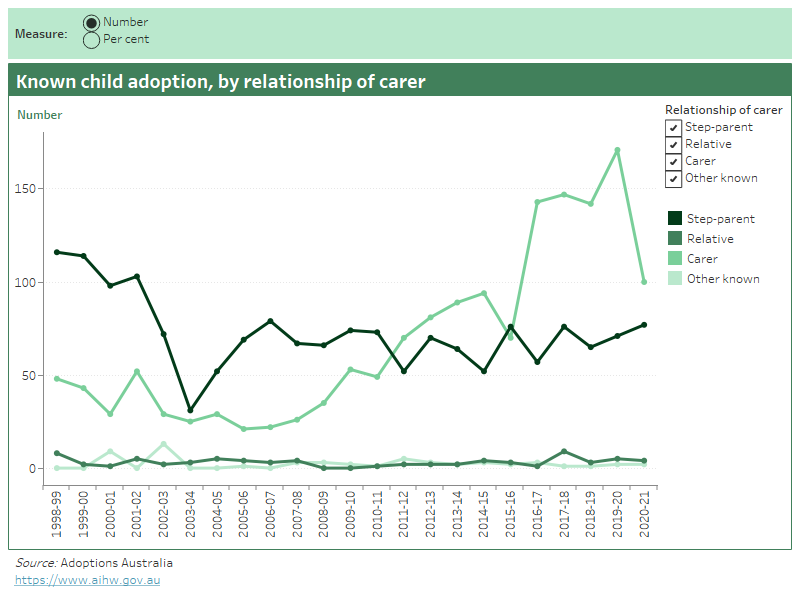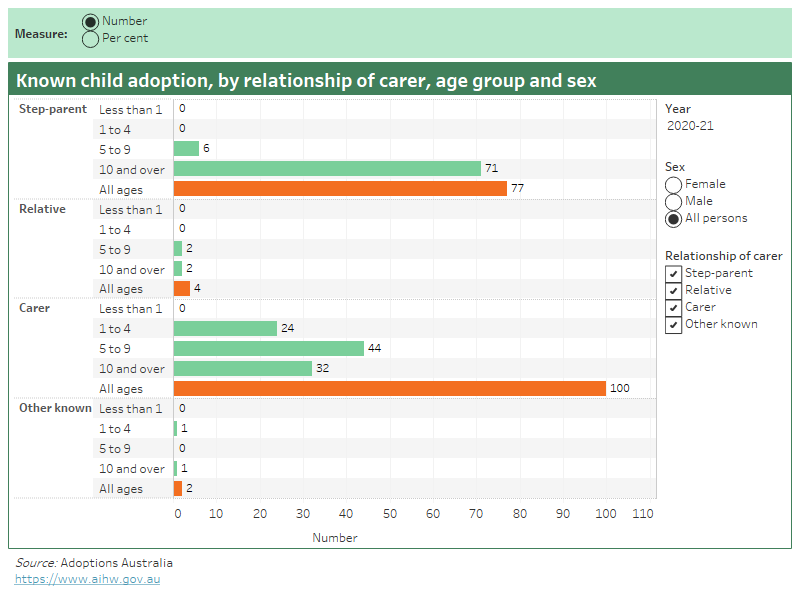Known child adoption in Australia
Known child adoption refers to the adoption of children who were born or permanently residing in Australia before the adoption, who have a pre-existing relationship with the adoptive parent(s) and who are generally not able to be adopted by anyone other than the adoptive parent(s). Known child adoptions include adoptions by step-parents, other relatives, and carers.
Simplified overviews of the known child adoption process for step-parent and relative adoptions (Figure 3) and carer adoptions (Figure 4) are presented below.
Note: Processes may vary between jurisdictions.
Source: AIHW
Note: Processes may vary between jurisdictions.
Source: AIHW
Known child adoptions provide children with a clear legal position, status, and stability within the family arrangement. In some circumstances, the adoption may be finalised after the adoptee is legally considered an adult. The majority of known child adoptions are by step-parents adopting their partner’s children, or by long-term carers, such as foster parents, of children placed in their care.
Adoptions by relatives other than step-parents are less common, as states and territories have policies that promote the use of parental responsibility orders (e.g. permanent care and guardianship/custody orders) rather than adoption when a child is to be permanently cared for by another relative. Known child adoptions by people who are not carers or relatives, such as by commissioning (surrogate) parents, are uncommon in Australia.
The plot shows the number of known child adoptions, by relationship of the adoptive parent(s) and by year, from 1998-99 to 2020-21. Adoptions by step-parents were the most numerous type of known child adoption up to 2010-11, with adoptions by carers being most common since then. These two types of adoption account for the vast majority of all known child adoptions in all years across the period.

Age of known child adoptees
The tendency for children in known child adoptions to be older is a product of minimum age requirements for some types of known child adoptions and, in many jurisdictions, the length of time the intended adoptive parent(s) needed to have had a relationship with the child before an adoption becomes possible. Children adopted by step-parents are generally older than those adopted under other types of adoption, including other categories of known child adoption, in part, due to the additional time involved in forming step-families.
The plot shows the age distributions of children adopted through known child adoptions, disaggregated by year and by the relationship of the adoptive parent. For known child adoptions finalised in 2020-21, all of the 77 children adopted by step-parents were aged 5 and over, with all but 6 aged 10 and over. For the 100 finalised adoptions by carers, the age distribution was more evenly spread, with most children (44) aged 5 to 9. No children were aged less than 1 in any category.

Explanatory notes
Age is calculated from date of birth, in completed years. For known child adoptions, this is the age when the adoption order for the child was granted.
‘Other known’ was introduced as a reporting category in 2000–01, but not consistently used as a reporting category until 2007–08. In addition to adoptions from commissioning parents, adoptions recorded as ‘other known’ prior to 2007–08 may include adoptions where the relationship with the adoptive parent was unknown.


